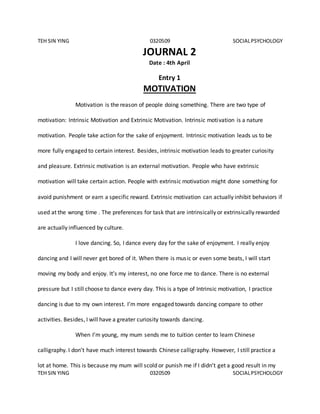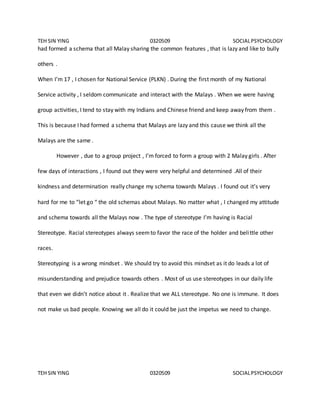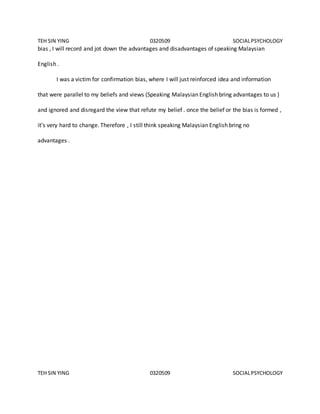The document discusses social psychology concepts including social loafing, social facilitation, stereotyping, confirmation bias, first impressions, and the halo effect. It provides examples from the author's personal experiences to illustrate each concept. The author describes encountering social loafing among group project members in high school, feeling more motivated to perform when competing with a cousin, and overcoming preexisting stereotypes about Malays through interactions during national service.

















